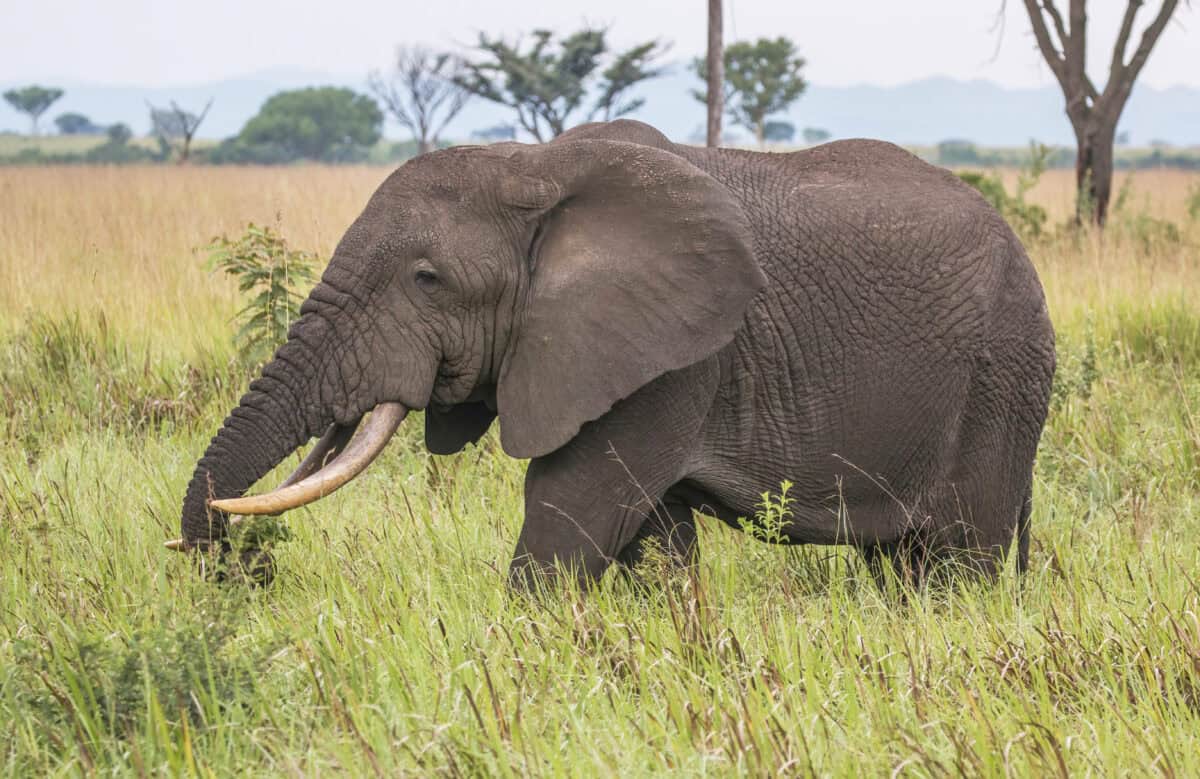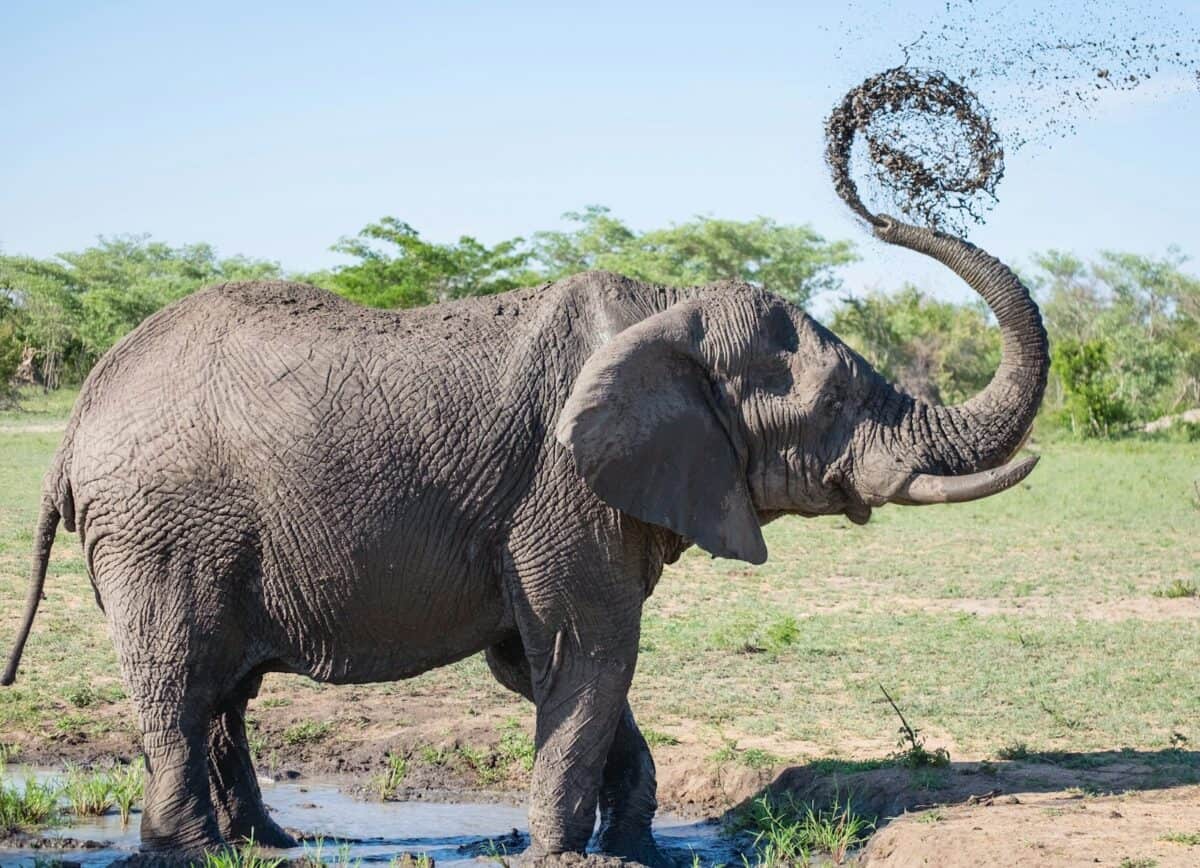The world of elephants is full of wonders waiting to be discovered. These gentle giants not only captivate us with their magnificent size but also impress us with their remarkable intelligence, social behaviors, and roles in the environment. Whether in the savannas of Africa or the forests of Asia, elephants showcase a range of incredible behaviors that highlight their uniqueness in the animal kingdom. Let’s delve into the fascinating world of these majestic mammals and explore 14 incredible things elephants do that might just surprise you.
14. Extraordinary Memory

Elephants are often celebrated for their excellent memory, which serves them well in the wild. This trait enables them to remember watering holes over large distances and navigate complex social networks. Research shows that the matriarchs, the leaders of elephant herds, often rely on their superior memory to guide their families in times of drought by recalling distant water sources.
13. Complex Social Structures

Elephants are highly social animals with complex family structures. Female elephants typically stay with their natal herd, led by the eldest female matriarch. This social system supports communal care of young elephants and enhances the survival chances of the group. Males, on the other hand, tend to leave the herd upon maturity to lead a more solitary lifestyle or join bachelor groups.
12. Advanced Communication Skills

Communication among elephants is incredibly complex, involving a variety of vocalizations and physical gestures. Elephants use infrasonic sounds, which are vibrations about 20 Hz, to communicate over long distances. These low-frequency rumbles can travel through the ground and be detected by other elephants, allowing for coordinated movements across vast landscapes.
11. Demonstrating Empathy and Altruism

Elephants are known for their empathetic and altruistic behaviors. They comfort family members in distress, assist injured or ailing herd mates, and even show respect for the dead. This compassion emphasizes the emotional depth of elephants, showcasing their ability to connect deeply with their own kind and even other species.
10. Tool Use and Problem Solving

Although tool use is often associated with primates and certain bird species, elephants have demonstrated remarkable problem-solving abilities and tool usage as well. They have been observed using sticks to scratch unreachable parts of their bodies and modifying branches to swat flies. Their ingenuity in using available resources underscores their cognitive capacities.
9. Environmental Engineers

Elephants play a crucial role in shaping their environment as ecosystem engineers. They help maintain the balance of their habitat by toppling trees and clearing areas which encourages plant growth, dispersing seeds through their dung, and creating water holes used by various species. This engineering activity facilitates biodiversity and ecosystem health.
8. Exceptional Hearing Abilities

Elephants possess exceptional hearing, allowing them to detect sounds over vast distances. This includes the ability to “hear” through their feet by sensing vibrational cues on the ground. Such abilities are vital for detecting threats, coordinating social interactions, and navigating their environment.
7. Using Mud and Water for Skincare

Elephants are often seen enjoying mud baths and spraying themselves with water. This behavior serves several practical purposes such as cooling their large bodies, protecting skin from insects, and providing a natural sunscreen. The mud and water help maintain healthy skin, preventing it from drying out and cracking.
6. Mourning Their Dead

Elephants have been observed mourning their dead in behavior that mirrors human rituals. They gently touch the bones of deceased elephants, sometimes even covering bodies with leaves and branches. Mourning practices indicate a level of awareness and emotional expression that is rare in the animal kingdom.
5. Long Gestation Periods

The gestation period of an elephant is the longest among land mammals, lasting about 22 months. This lengthy period allows the fetal elephant to develop thoroughly before birth, equipping the newborn with the size and skills needed to thrive in a competitive environment.
4. Strong Mother-Offspring Bonds

The bond between an elephant mother and her calf is particularly strong, characterized by nurturing and protective behaviors. Calves stay close to their mothers for several years, learning crucial social and survival skills. This bond is fundamental to the calf’s development and integration into the herd.
3. Diverse Diet and Feeding Habits

Elephants are herbivorous and need to consume vast quantities of food—up to 300 pounds a day. They feed on a wide variety of plant materials, including leaves, bark, fruits, and grasses. This diverse diet requires them to travel great distances daily, facilitating seed dispersal and ecosystem maintenance.
2. Navigational Skills

Elephants have remarkable navigational abilities, guiding them across complex terrains and long-distances. Studies show that elephants can travel tens of kilometers daily in search of food and water, often following ancient migratory routes that have been passed down through generations.
1. Cultural Behaviors

Researchers have discovered cultural behaviors in elephants, which include traditions and learned behaviors passed through generations. Different elephant populations exhibit distinct practices, such as methods of using tools or migratory paths. These cultural traits contribute to the identity and cohesion of various elephant groups.
Conclusion:

In conclusion, elephants are truly astounding creatures, displaying a remarkable range of intellectual, emotional, and social behaviors that reflect their unique place in the natural world. Their significant role as ecosystem engineers and their cultural depth make elephants vital to maintaining ecological balance and biodiversity. Whether marveling at their social intelligence or admiring their monumental presence, elephants continue to fascinate and inspire across cultures and continents.
- 8 Times Animals Helped Solve Crimes in the Most Unexpected Ways - August 20, 2025
- 10 Stunning Animals You Can See in the Great Barrier Reef - August 20, 2025
- 14 Loudest Birds in the U.S. - August 20, 2025

